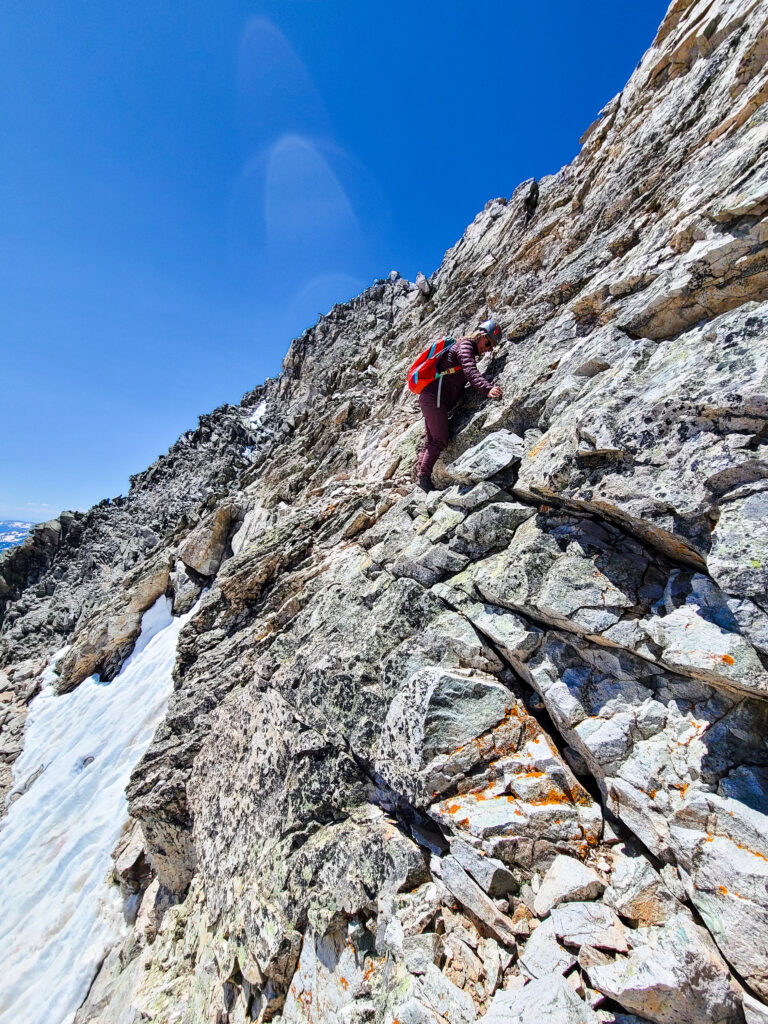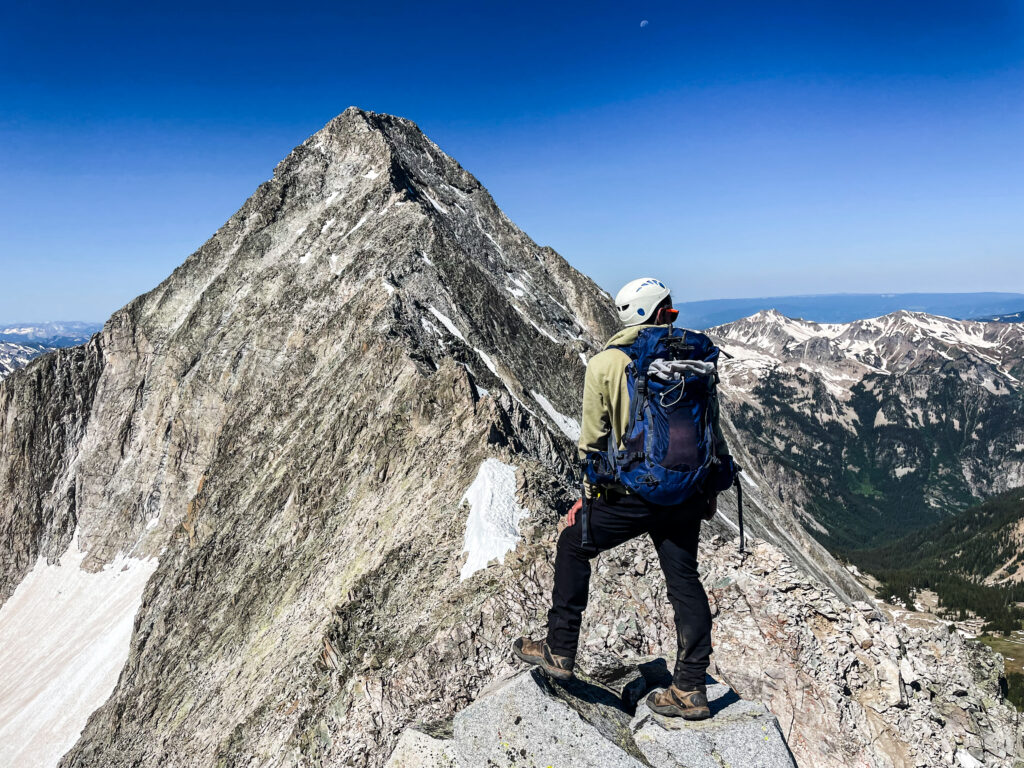
Capitol Peak is perhaps Colorado’s most notorious 14er. I’ll be the first to admit I’m not an expert in fourteeners, but my husband and I traveled down to Colorado for a week of climbing these famed Rocky Mountain peaks. We were new to the Colorado summit scene, but in our defense, we were very experienced in other mountain realms. We knew Capitol Peak was no beginner hike, and to put it into perspective, we spend most of our time in the mountains of Wyoming, where the easiest of 13ers are harder than almost all Colorado 14ers. Our background was the sole reason we put Capitol Peak on our radar, and we figured why not knock that one off the list as soon as possible.
Leading up to Capitol, we had also spent the week climbing other fourteeners in the state. Capitol was my fourth fourteener of the week, with Wetterhorn, Blanca, and Humboldt preluding it.
All this to say, we felt ready and confident to climb the Capitol, which should be required for the mountain.
Capitol Peak is one of the most difficult fourteeners in Colorado and has an elevation of 14,131 feet. It requires 5,032 feet of elevation gain on an out-and-back trail that is 15.9 miles.

The mountain can be completed as either an overnight backpacking trip or in a one-day push. Capitol Lake is the most common overnight camping spot, which does require a reservation. If you plan to camp overnight, book and plan your weekend as soon as possible, as last-minute reservations in the summer are unlikely.
If you do not have a camping reservation, climbing Capitol Peak is still entirely doable as a one-day ascent as long as you are in decent mountain shape. I recommend spending the weekends leading up to Capitol training on other 14ers.
We opted for a single-day push in early July of 2023, which ended up being a bit too early in the season. I would say Capitol Peak is best climbed from mid-July to September. If it is a low snow year, the path could be doable in early July.
You will not want to complete this route when excessive snow or ice threat, as it is considered a class 4 climb. Class 4 mountains mean they include heavy scrambling with extreme exposure. Ice & snow on routes ranked as class 4 increases dangers drastically. You do not need ropes to climb a class four route, but you will want to be comfortable and confident on very exposed terrain.
Here was our timeframe for climbing Capitol Peak in a day:
4:30 am: Leave trailhead
7:05 am: Arrive at lake
11:40 am: Summit
5:00 pm: Arrive back at trailhead

That made for a 12.5-hour day. If you do Capitol in better conditions, you can easily beat this time. Always leave before sunrise to summit as early as possible and avoid afternoon storms.
We had quite a few obstacles during our climb that would not be present later in the season. As you can see from photos, Capitol Lake was almost entirely iced, and snow covered the trail on the entire route above the ridge. There weren’t many trail reports on Capitol since it was earlier in the season, and we decided to leave our crampons and ice axes in the car, which turned out to be a bad decision. Instead of taking the standard route, the presence of icy snow forced us to scramble the entire ridgeline from the first pass to the summit. It took excessively longer on consistent class 3-4 terrain. It was spicy and not something I’d recommend for a normal ascent. Bringing our ice axes and crampons would’ve sped things up immensely.









Leave a Reply